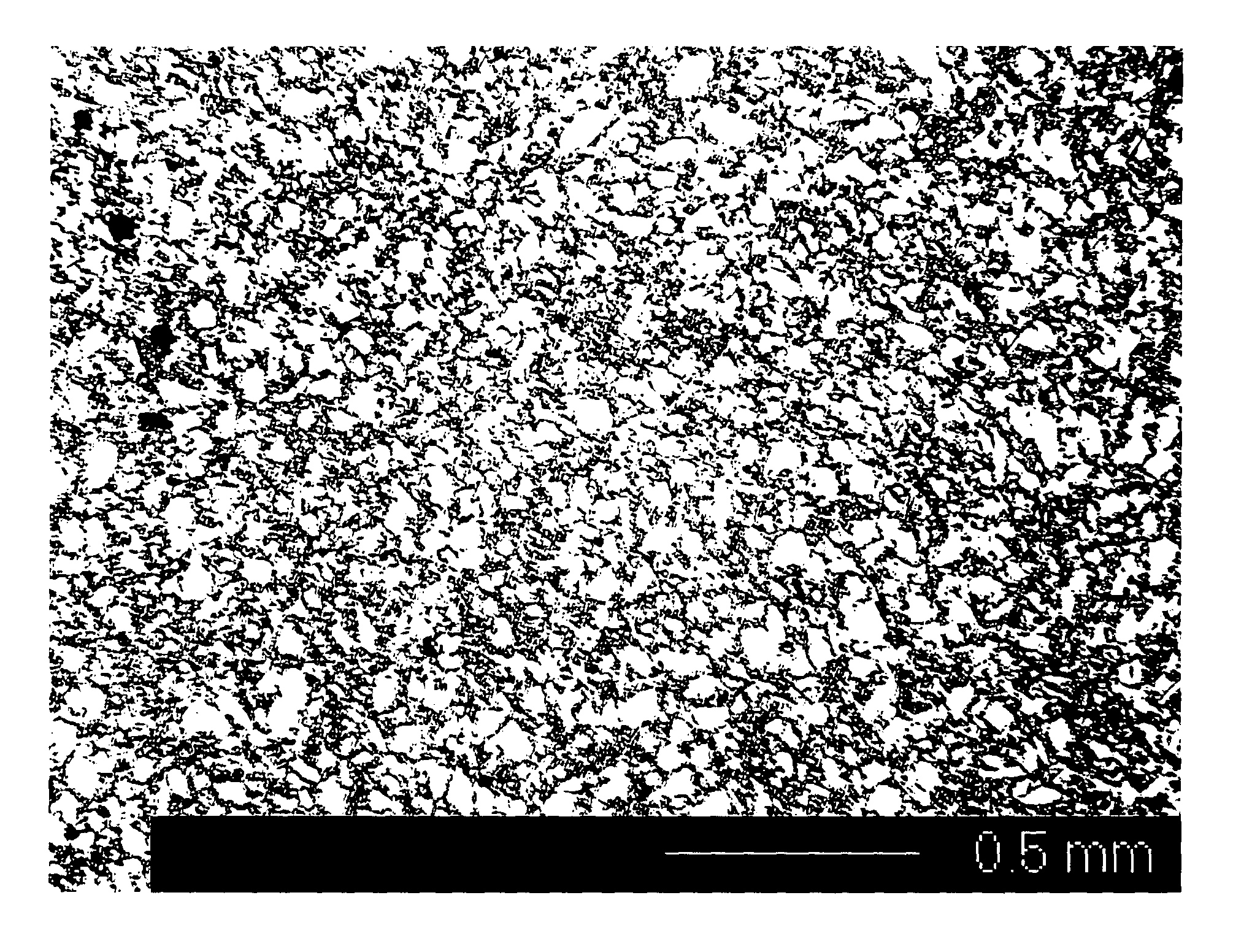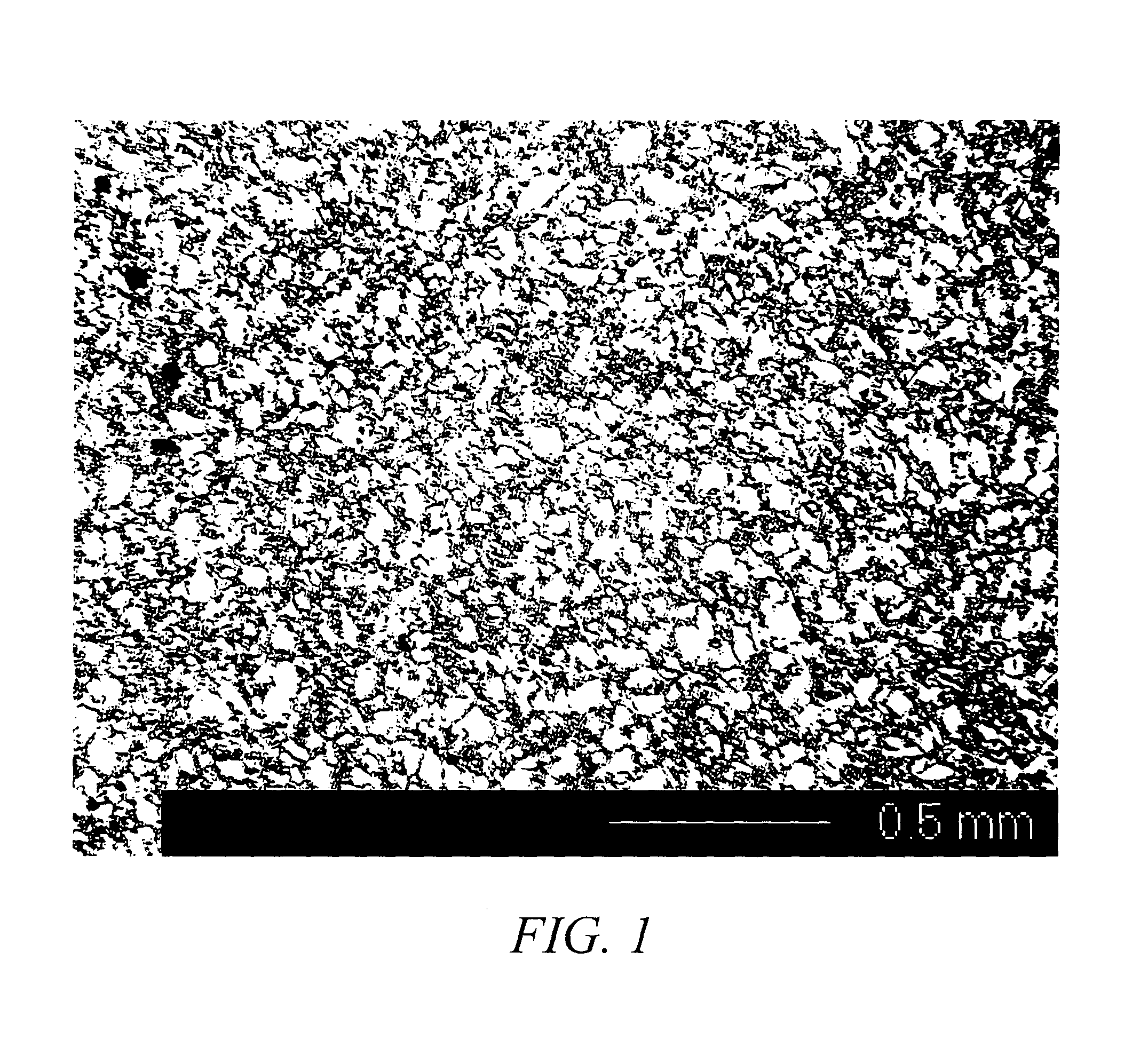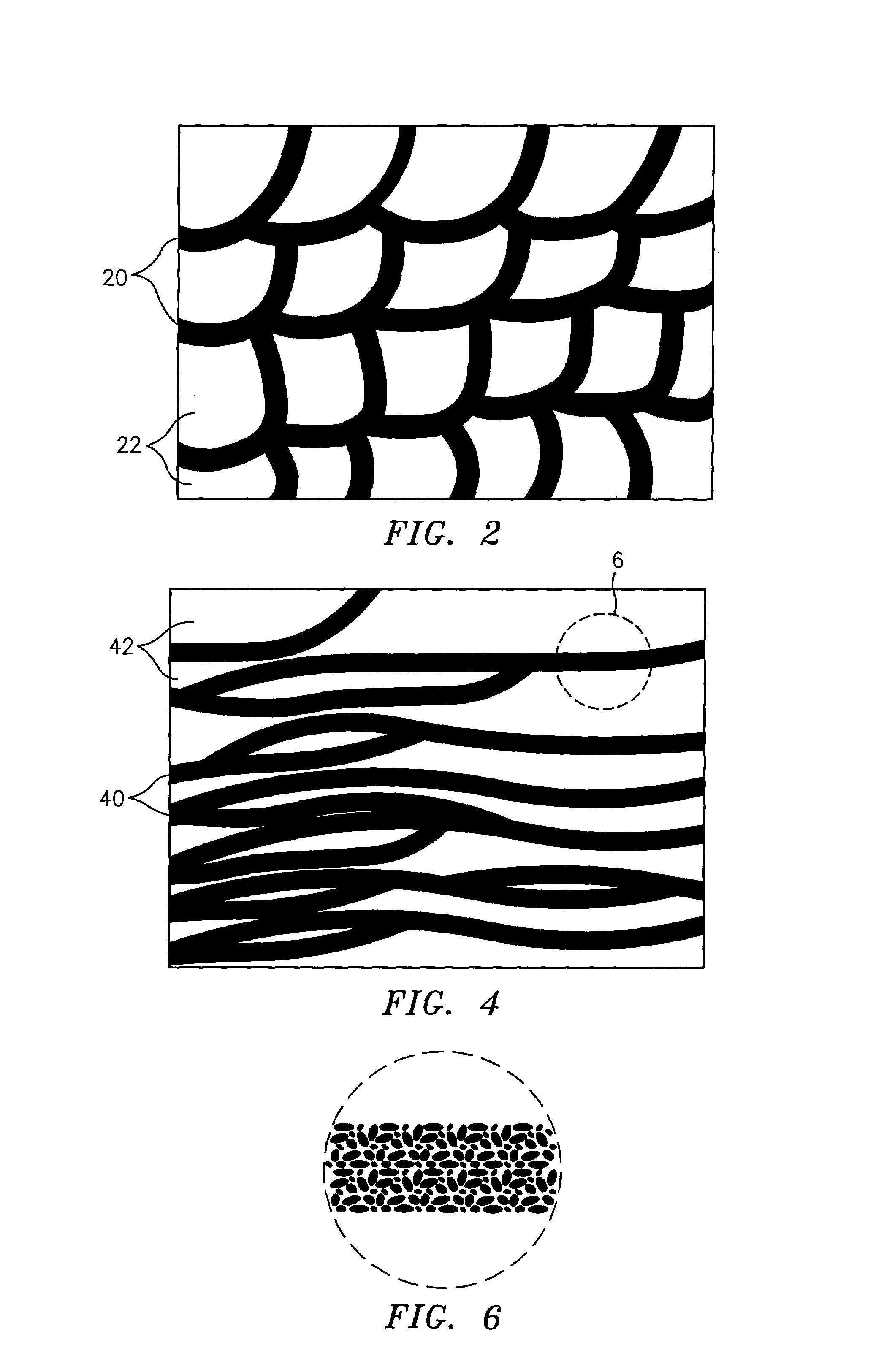Pressable glass-ceramics with textured microstructure
a microstructure, glass-ceramic technology, applied in the field of glass-ceramics, can solve the problems of limited and experienced dental technicians who can achieve the same accuracy in building porcelain margins, and the most time-consuming procedure is manual fabrication of porcelain margins
- Summary
- Abstract
- Description
- Claims
- Application Information
AI Technical Summary
Benefits of technology
Problems solved by technology
Method used
Image
Examples
example 3
[0032]The same glass as the one used in Examples 1 and 2 in Table 2 above was milled to yield a glass (a low expansion) frit with an average particle size of 36 μm. The high expansion frit of Examples 1 and 2 was combined with a second high expansion frit in the weight ratio of from 1:1 to 1:1.5. Both high expansion frits had a particle size of about 6 μm. The mixture of the two high expansion frits was combined with the glass frit in the ratio of about 1:1. Additionally, about 2 wt % of Al2O3 and about 2 wt % of fused silica were added to lower the thermal expansion of the mixture of the frits and to impart sufficient resistance to distortion to enable firing of the overlay porcelain at temperatures up to about 890° C.
[0033]
Overall composition of Example 3 and Example 1 & 2 from above.Frits Used in Example 3OverallFirstSecondcomposition,GlassLeuciteLeucitewt %Examples 1 & 2Example 3FritFritFritSiO264.6965.3767.3965.0163.82B2O30.000.000.000.000.00Al2O317.7917.0313.3518.0117.69ZnO0.0...
example 4
Strength, Weibull Modulus And Compatibility With Porcelain-Fused-To-Metal (PFM) Porcelain
[0035]A mixture of frits used in Example 3 and fused silica was shaded by using about 1% of commercially available pigments. Pellets were fabricated as described above in the previous examples. Various dental articles and various test specimens including 24 rods for a 3-pt bend test were pressed at 1000° C. using the equipment and procedures described above. Following normal divesting procedures, as-pressed rods of about 20 mm in length and about 3.3 mm in diameter were loaded to failure in three-point bending configuration. Three-point flexure strength was determined to be 142 MPa with a standard deviation as low as 12 MPa (8.4%). In addition, the measured strength values were ranked and used to calculate the Weibull modulus (m). An extremely high Weibull modulus of 13.6 and a Weibull strength value (σ0) of 146.9 MPa with the correlation factor (R2) of 0.95 were established for this material. B...
PUM
| Property | Measurement | Unit |
|---|---|---|
| glass transition temperature ≧580° | aaaaa | aaaaa |
| glass transition temperature ≧600° | aaaaa | aaaaa |
| particle size | aaaaa | aaaaa |
Abstract
Description
Claims
Application Information
 Login to View More
Login to View More - R&D
- Intellectual Property
- Life Sciences
- Materials
- Tech Scout
- Unparalleled Data Quality
- Higher Quality Content
- 60% Fewer Hallucinations
Browse by: Latest US Patents, China's latest patents, Technical Efficacy Thesaurus, Application Domain, Technology Topic, Popular Technical Reports.
© 2025 PatSnap. All rights reserved.Legal|Privacy policy|Modern Slavery Act Transparency Statement|Sitemap|About US| Contact US: help@patsnap.com



